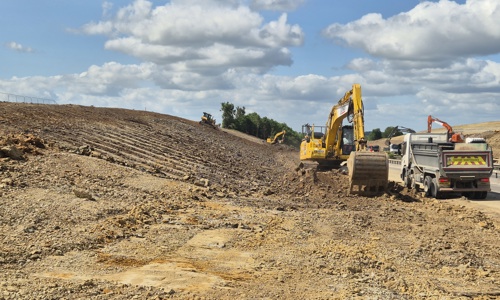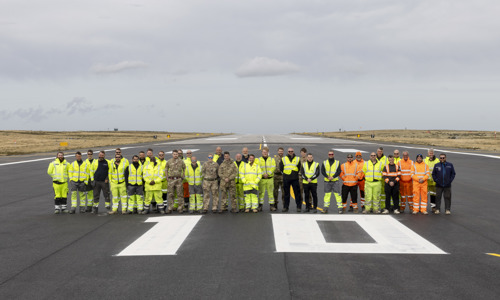- Energy
- 27 Mar 2025
Working under the Capital Construction Services (CCS) Lot 3 framework with Cadent, we’re in the final stages of delivering a one kilometre diversion of a 10-inch steel high pressure gas pipeline at the Cambridge Biomedical Campus Development.
The project aims to accommodate the phase two expansions to the site, which will include the building of new offices and laboratory buildings. Several of the phase two building are over the Cadent owned and operated 10-inch high pressure gas pipeline from Teversham to Madingley Road.
Our team diverted the pipeline to just under one kilometre, using the new bicep tool for stoppling operations and tie in at both ends of the new steel pope. A new high-pressure gas pipeline diversion was then installed.
We’ve successfully delivered multiple projects, including Medipark, that are similar in scope. Undertaking design and build for the Medipark gas mains project over the course of approximately 14 months, we’ve acted as principal contractor and principal designer for temporary and permanent works designs.
Our delivery team, including specialists including welders, stopple experts and crane operators, collaborated with Cadent to successfully deliver:
- Stoppling work
- Specialist craning
- Building temporary bypasses
- Specialist scaffolding to support stoppling work
- Stripping more that 500 tonnes of topsoil
- Dewatering
- Detail design of temporary and permanent works
- Installing a 1km pipeline
- Steel welding T’s on the high pressure main
- 2.5m deep excavations
- Temporary works management
- Acting as principal contractor and principal designer
As principal contractor, we were responsible for all civil engineering and mechanical work, working with a specialist welding company for steel pipeline work. We carried out all mechanical and civil design activity, including health and safety processes and procedures.
We carried out various design risk assessments including HAZOP< HAZID and HAZCON.
This project needed temporary works in multiple parts of the site, including fencing, scaffolding and shoring. Our temporary works coordinator planned, executed and monitored all temporary works on site.
Before the project began, we identified gaps in skillsets and arranged training courses prior to the project start date.
By using various skill sets throughout the project stages, all deliverables were met safely and efficiently.
We put efficiency and safety first by selecting the right equipment. Choosing a 30T excavator, despite its higher cost, reduced the need for operatives to work in deep excavations, ensuring a safer operation. This machine also facilitated moving topsoil away from a live gas main, resulting in a two-week time savings.
In our aim to look after local biodiversity, we protected water roles nesting near the south stoppling area. We installed a temporary barrier between the stream and the site. Our SHEQ and Ecology teams collaborated with Cadent, ensuring no delays while mitigating environmental risks.
During certain project phases, we needed to work beyond normal hours. To minimise disruption, we informed local residents in advance, maintaining positive engagement. Residents requested our refrigerator for their community allotment, fostering great relationships and reducing waste.
Due to excavation locations, specialised lifting equipment was necessary. With a temporary air ambulance helipad nearby, we communicated with the hospital about crane usage to ensure safety and minimise impact on emergency services.




